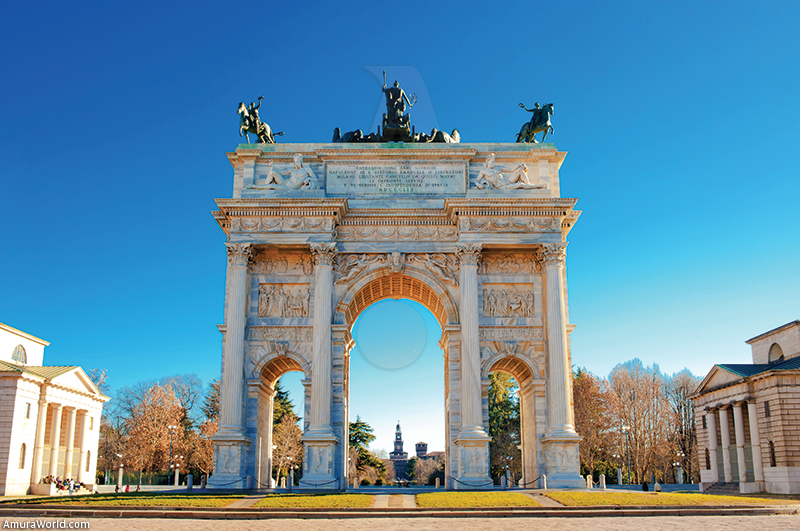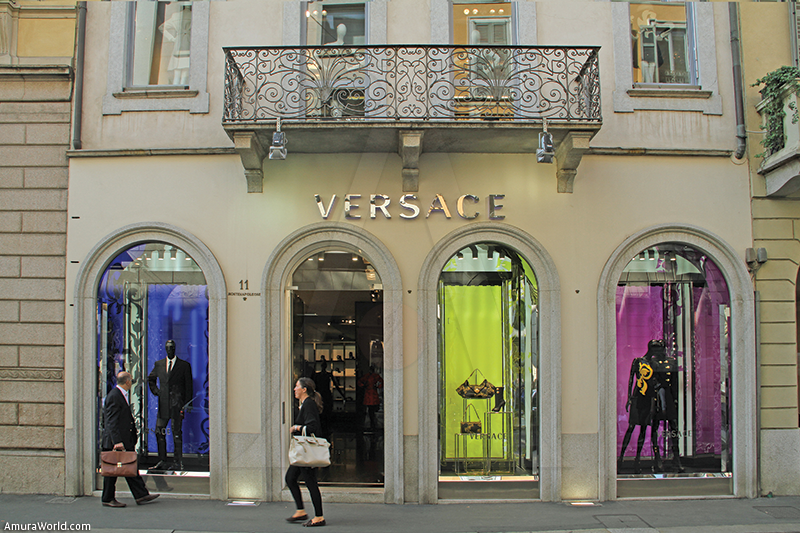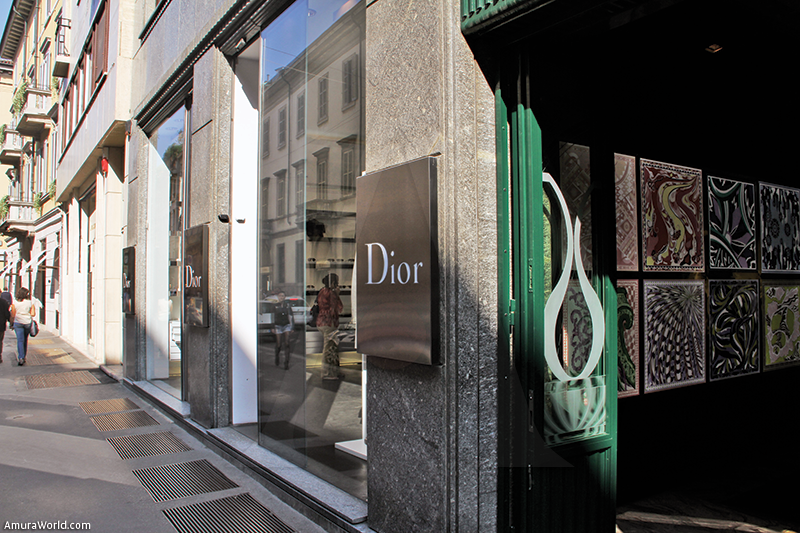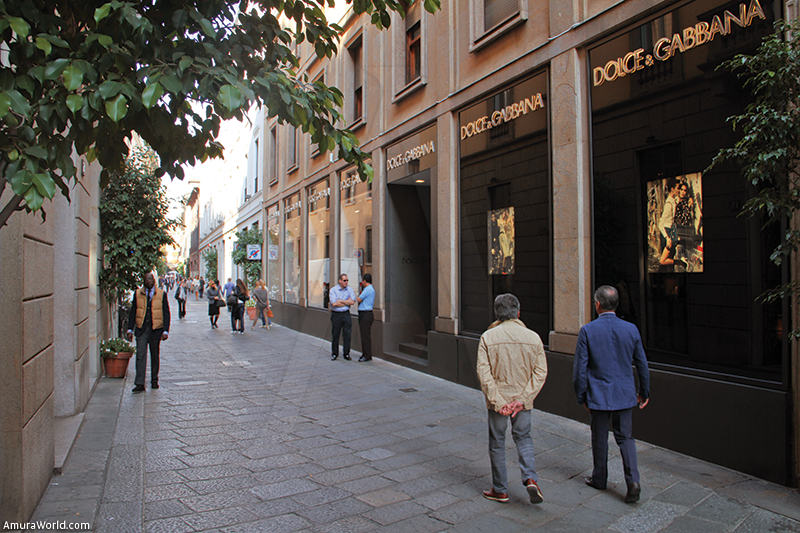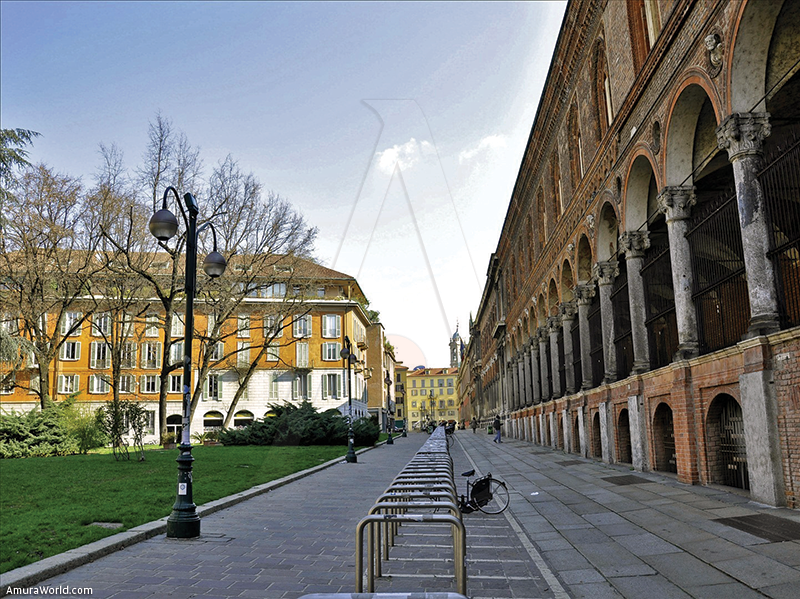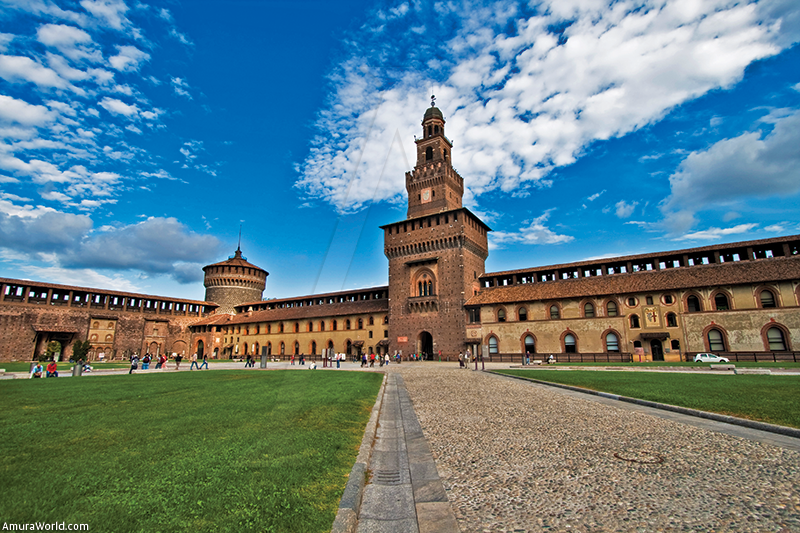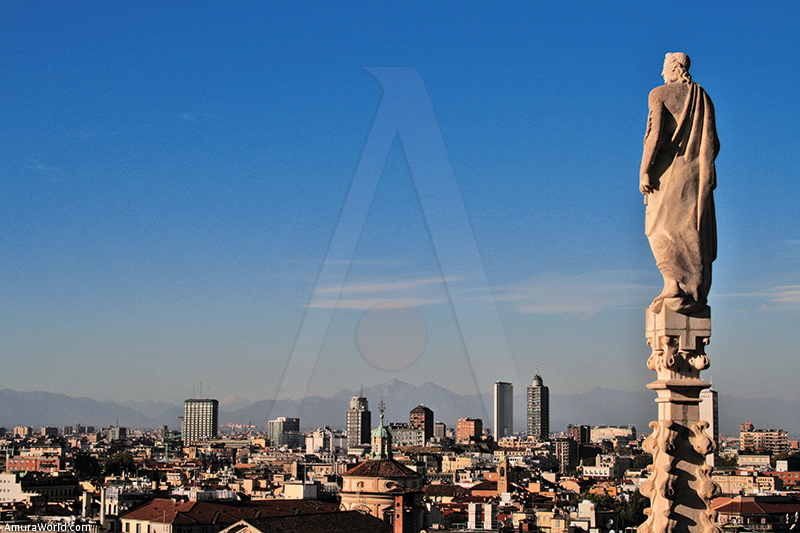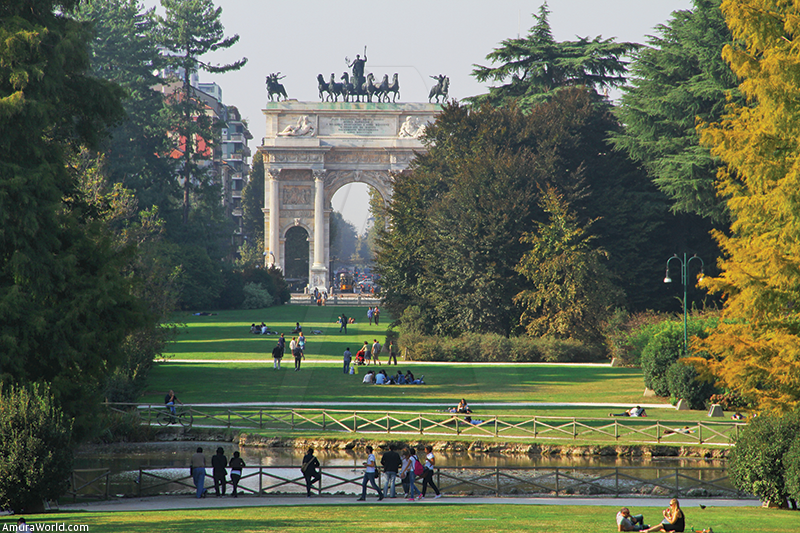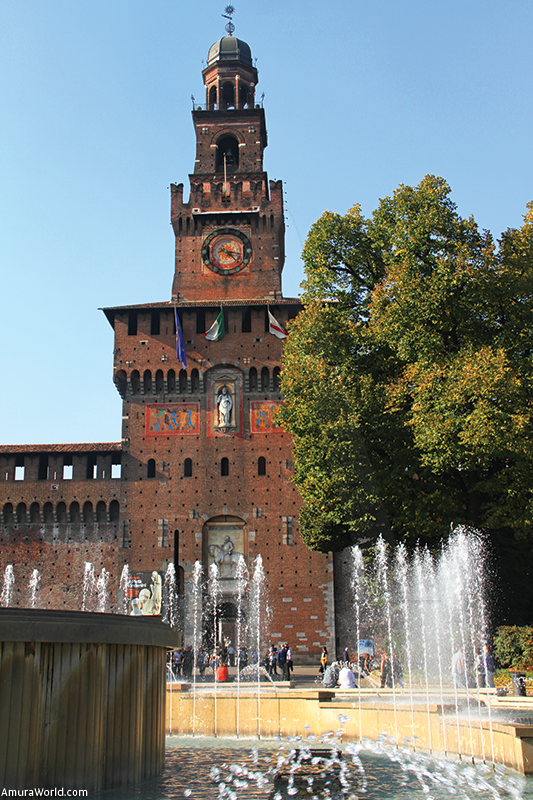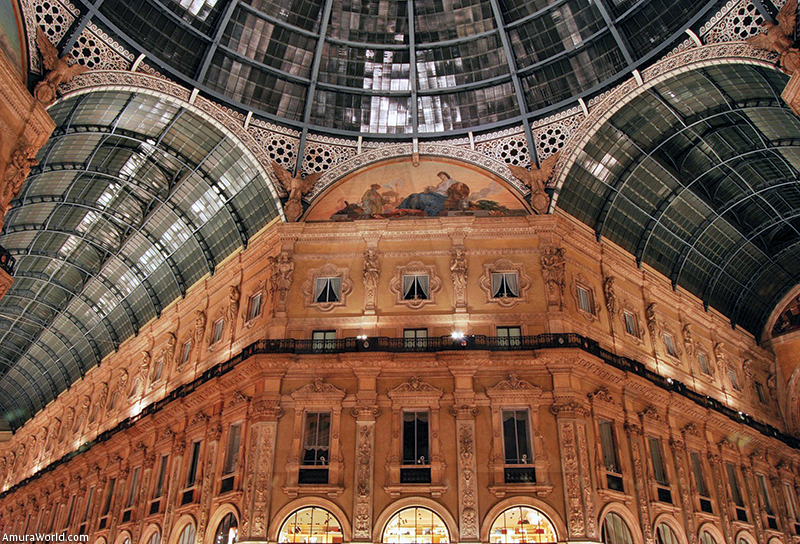Milan, capital of elegance, glamor city of beautiful monuments and museums, with a wild lifestyle. La Scala di Milano invited to vibrate to the sound of opera.
We settled into the Four Seasons Hotel Milan, a former convent of the XVth century, a jewel with the excellence that characterizes the Four Seasons.
Founded by the Celts of northern Italy in 600 BC, conquered by the Romans, it became the imperial capital before being sacked by the Huns in 450. It was coveted throughout history by the Ostrogoths, the Byzantines, Charlemagne. Fell under the power of the Visconti in 1277, in 1450 the Sforza harbored artists such as Leonardo da Vinci. It was conquered by France in 1515, fell under the authority of Charles V until 1713, when it was ceded to Austria. It was occupied by Napoleon and Italy joined in 1859.
Today is the economic capital of Italy, home of the Milan Stock Exchange. With his past vibrates at the speed of the XXIth century.
Day 1
We walked the Quadrilatero neighborhood looking the showcases, art galleries and antiques in Via della Spiga. We visited Dolce & Gabbana, walked up to the Porta Nuova which was part of the medieval wall. In the Via Sant’Andrea we admire the palaces, discover Channel, Fendi, Gianfranco Ferré, Hermès, Moschino, Prada…
We follow the Via Manzoni and arrived at the Poldi Pezzoli museum to admire the famous “Portrait of a Young Girl” by Antonio Pollaiolo and other works of art. On Via Gesu we visited the museum Bagatti Valsecchi, a neo-Renaissance palace that retains its nineteenth century furniture.
Exhausted, we ate at “Il Teatro”. Then we went to dance to Shocking Club, one of the most sophisticated places, a place where you will see and be seen.
Day 2
We walked up to the Piazza del Duomo, a cathedral which was begun in 1386 and was consecrated in 1418. Its facade was completed in the nineteenth century by Napoleon.
After we entered the famous Galleria Vittorio Emanuele II, inaugurated in 1867 by King Vittorio Emanuele II.
Connects the Piazza del Duomo to Piazza della Scala, where the famous Queen Alla Scala theater, opened in 1778. Its simple facade encloses a wonderful theater where the great voices fill the stage.
In the Piazza della Scala reign a statue of Leonardo da Vinci and the Palazzo Marino, built in 1558 and finished in 1892, today houses the City of Milan. We ate at Savini att the Galleria Vittorio Emanuele II.
We follow the Piazza San Fedele, we passed the statue of the writer Alessandro Manzoni to find the Casa degli Omenoni with its Renaissance facade housing a collection of paintings by Titian, Correggio and the Codex Atlanticus of Leonardo da Vinci.
In Manzoni’s house and admire their furniture in Piazza del Liberty we discover a modernist building, near the church of San Carlo (XIX century) we find the famous Omm de Preja (stone man), a copy of a Roman statue.
In the Via Mercanti rises the tower of del Comune (1272) which dominates the Palazzo dei Giureconsulti. We visit the Pinacoteca Ambrosiana (1618), where we discover paintings by Titian, Botticelli and Da Vinci.
At 19:30 am we entered the Scala to let us get enchanted by the music. It was “La Donna del Lago” by Rossini, with Juan Diego Flórez and Joyce DiDonato. The spell was sublime, the magic choir invited us to enter into a legend. We had dinner at Cracco, 2 Michelin Stara venue.
Day 3
Passing by Piazza and Via Dante Cordusio, we arrive at Castello Sforzesco (XIVth century), in the middle of Sempione park adorned by the Arco della Pace, a pond, the Civic Arena, the Civic Aquarium. The castle is the most important museum of Milan and then we visit the Sala delle Asse painted by Leonardo da Vinci, the Capella Ducale with its original frescoes, the Board of Trivulzio tapestries Cortile della Rocchetta with 3 portals.
We ate at the Osteria della Cagnola, near the Arco della Pace, walked down the Corso Magenta with it’s magnificent buildings. We arrived at Santa Maria delle Grazie church in the fifteenth century, with a frescoed Gothic nave, a decorated dome, with a fountain at the cloister and the refectory with the fresco “The Last Supper” by Leonardo da Vinci and the mural “The Crucifixion” by Montorfano. We visited the Palazzo Litta (XVIIth century) with beautiful rooms, a stylish courtyard and a marble staircase. In the Civic Archaeological Museum we admire Roman and Christian works. We follow through the church of San Maurizio (1503), the Via Brisa with its Roman ruins and the Piazza Affari where stands the Borsa Valori (1931), the most important Italian stock exchange.
We stopped at the historic coffee Magenta and came to La Scala for the concert of the Philharmonic Chorus Della Scalla, directed by Daniel Barenboim. With the music of Beethoven in the head, we had dinner at Ristorante Boeucc, the oldest of Milan (1696). The day ended with charm and harmony.
Day 4
In Via Torino we reached the Largo Carrobbio and the Museo Messina. Admiring the medieval gate Ticinese, decorated with the tabernacle of the Virgin and Child with St. Ambrose. We discover San Lorenzo alle Colonne, a fourth century basilica built with materials of a Roman amphitheater. The statue of Emperor Constantine looking its facade with columns and a beautiful bas-relief of San Lorenzo.
We walked through the park Piazza dell Vetra, we found the remains of a Roman circus. In the Via Lanzone is the church of San Bernardino alle Monache (XV century) with its brick facade decorated with tiles and frescoes. We reached Sant’Ambrogio (379). The Belfry of Canons dates from the XIIth century and the interior is the ribbed vaults supported on pillars. Here are the beautiful sarcophagus of Stilicho with reliefs from the IVth century, the Goleen Altar with with fine reliefs of the IXth century apse mosaic. The Chapel of San Vittore in Ciel d’Oro stands out with it’s golden mosaics.
We got to the Naviglio Grande, this canal was part of the navigable with locks. The last Sunday of each month an antique market installed along the place. We ate at the Osteria di Porta Cicca, a romantic restaurant.
In Sant´Eustorgio we admire the relics of the Magi, the paintings and the Diocesan Museum. We arrived in San Nazaro Maggiore where we struck the Trivulzio Chapel, octagonal design by Bramantino (XVIth century) with frescoes and stained glass. We passed Ca’Granda, a monumental building constructed to cluster the 30 hospitals of the city from the XVth century and eventually became the Statale Università di Milano.
At Largo Augusto the Verziere column commemorates the plague of 1676 and Via Durini is adorned with beautiful buildings while watching Velasca Tower, symbol of the modernism of 1958. The Palazzo Sormani Andreani (XVIIIth century) houses the national library. Santa Maria della Passione is the second largest church in Milan (1496), its organs and its chorus of wood are from the XVIth century.
We had dinner at the Pizzeria Napoletana la Taverna and at 20:00 hrs we enter in the Carcano theater to see “L’uomo dal Fiore in bocca and sgombero”. Then we went to Alcatraz, a former factory transformed into a disco.
Day 5
We visited the bohemian neighborhood of Brera and the Academia di Belle Arte. The Via Ponte Vetero took us to the Gothic church of Santa Maria del Carmine (XVth century) where we admired the paintings of Nuvolone, Fiammenghino and Landriani.
We passed the Palazzo Cusani with a baroque facade and in the lounge is the allegorical fresco Tiepolo style. We arrived at the Pinoteca Brera containing religious works and paintings by great artists such as Raphael, Caravaggio, Mantegna.
We went to the Conservatory, where enjoyed the concert of the Tokyo String Quartet who played Haydn and Mozart. We had dinner at Bulgari restaurant, located by the botanical garden.
On the way to the airport we visit the Abbazia di Chairavalle, choir frescoes tell the legend of the Virgin and the cruise one represent the family tree of the Cistercian monks. The picture of the Madonna painted by Bernardino Luini Buonanotte in 1512 monitors the ladder and the cloister.
Milan sent us off with a romantic view of the city: a Lombard capital, romantic, passionate, refined, elegant fashion center and heart of opera and lyric arts, queen of the party and art. Milan is an Italian treasure.
Text: Patrick Monney ± Photo: COVINGTON / BP / KRAMSKOJ / FABERGE / BP / PASLUC / BOVLR

